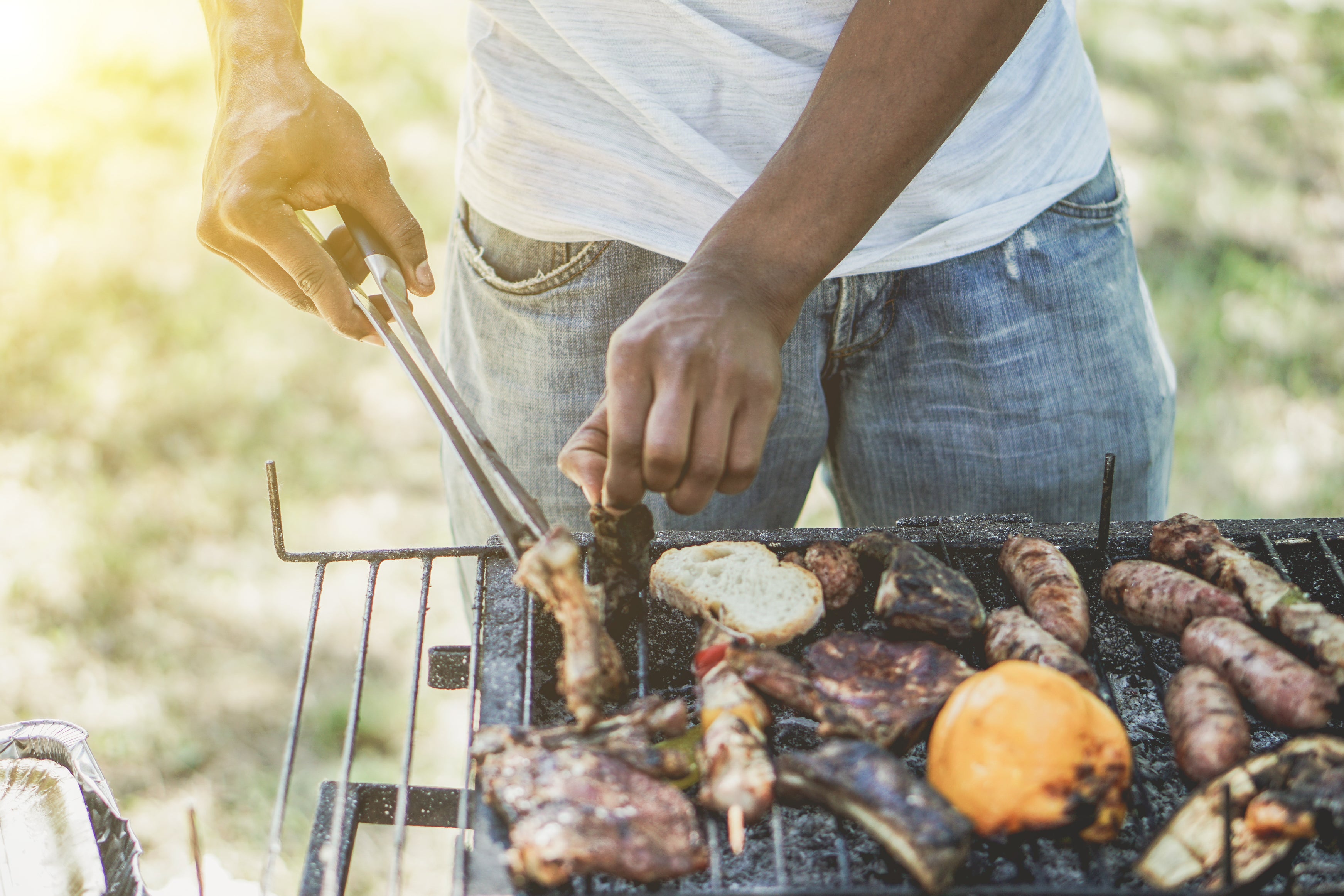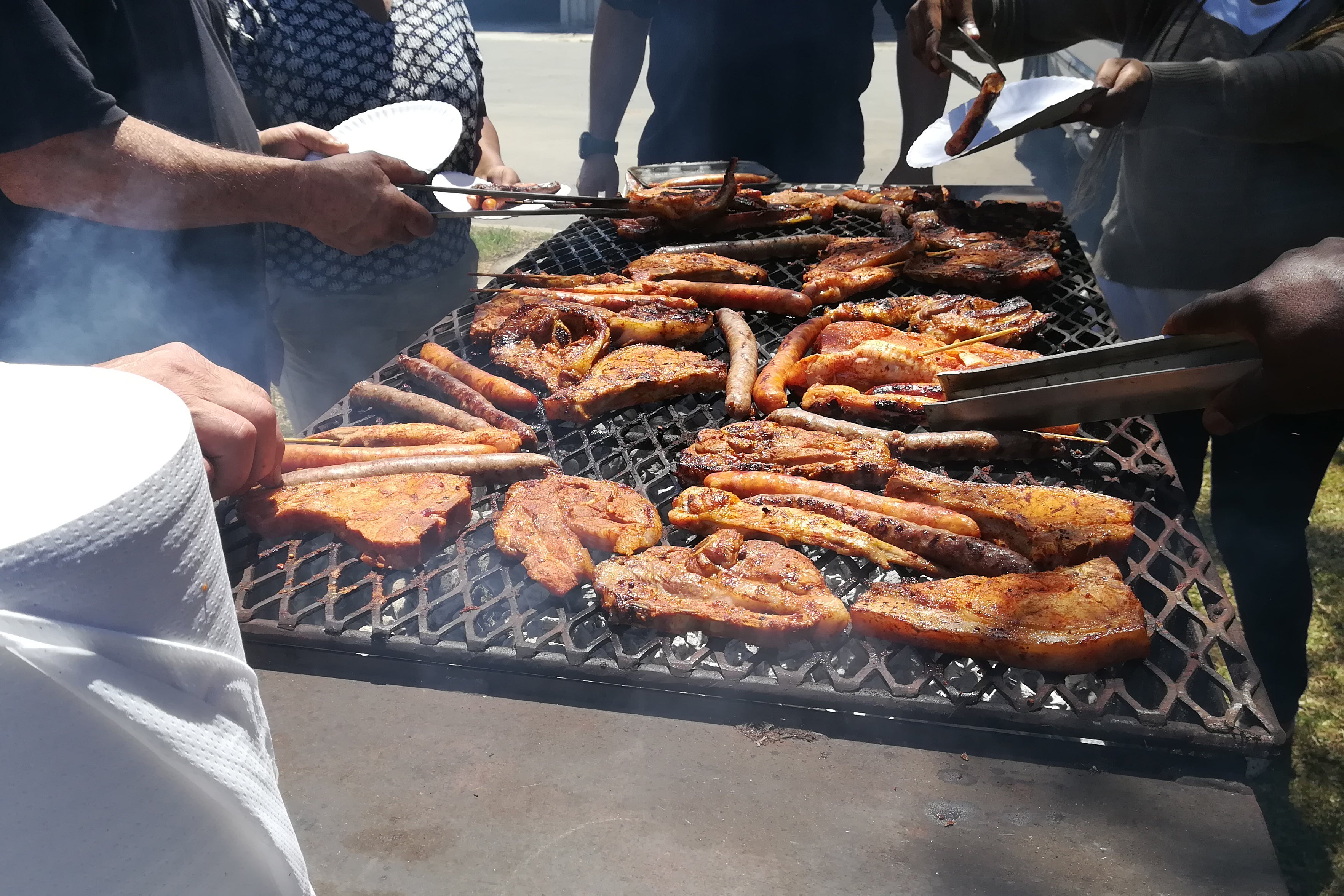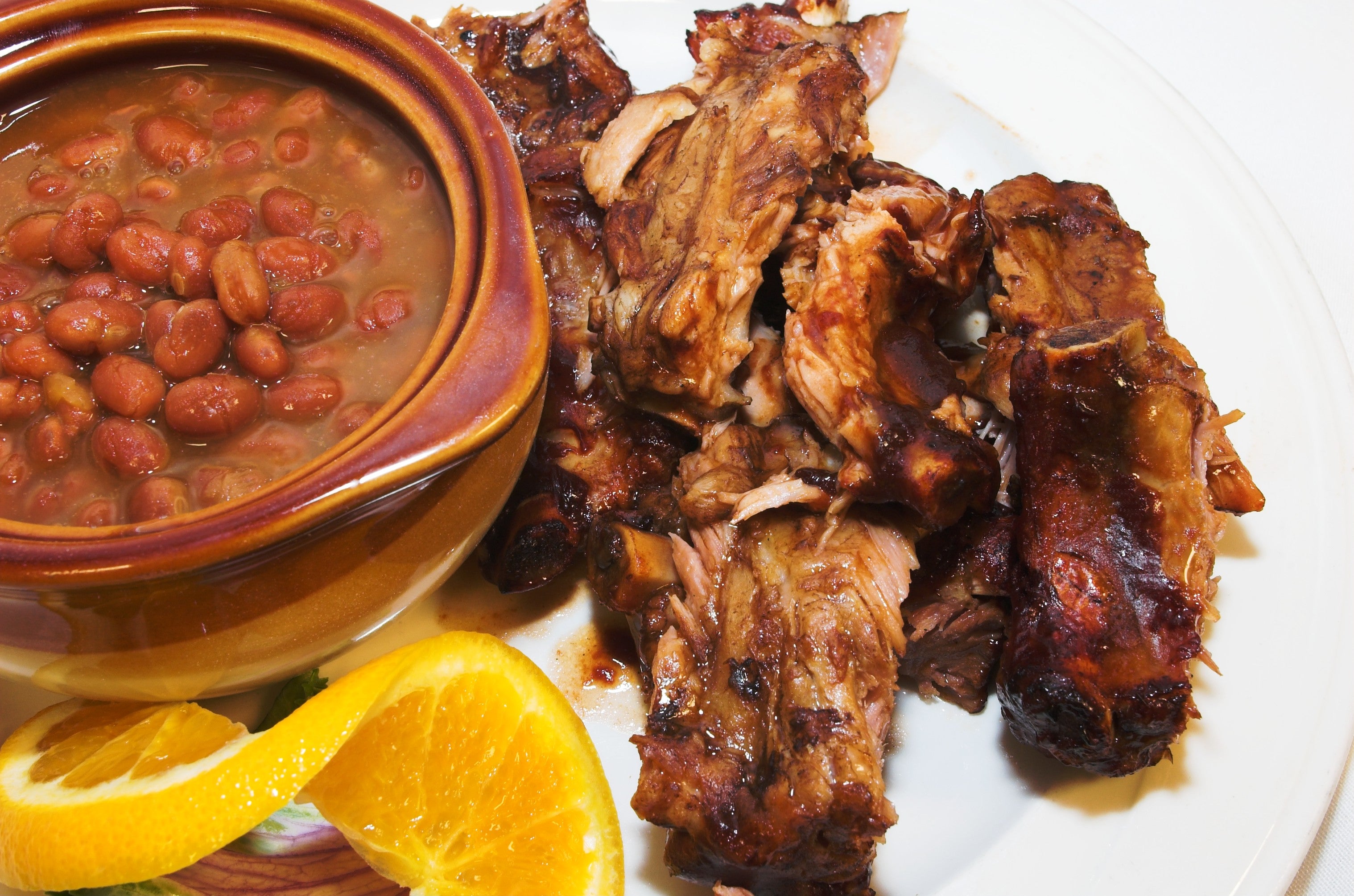How the long history of black barbecue was erased
How the media portrays barbecuing has skewed our understanding of the style. What was once dominated by the contributions of African Americans is now thought of as ‘white dude food’, writes Adrian Miller

Your support helps us to tell the story
From reproductive rights to climate change to Big Tech, The Independent is on the ground when the story is developing. Whether it's investigating the financials of Elon Musk's pro-Trump PAC or producing our latest documentary, 'The A Word', which shines a light on the American women fighting for reproductive rights, we know how important it is to parse out the facts from the messaging.
At such a critical moment in US history, we need reporters on the ground. Your donation allows us to keep sending journalists to speak to both sides of the story.
The Independent is trusted by Americans across the entire political spectrum. And unlike many other quality news outlets, we choose not to lock Americans out of our reporting and analysis with paywalls. We believe quality journalism should be available to everyone, paid for by those who can afford it.
Your support makes all the difference.Part of the reckoning in the more than 12 months since George Floyd’s murder has been a new awareness of how racism has deeply burrowed itself into aspects of culture that might seem to have little to do with race.
One great example: how the media portrays the art of the barbecue. Piles of smoked meat have long been portrayed as ‘dude food’ – the ultimate in male indulgence – but now it’s more like ‘white dude food’ than ever before. And that’s because since the 1990s, a robust barbecue-related media has overly celebrated white men and greatly diminished the contributions that African-American men and women have made to this beloved food. Restoring barbecue’s true history paints a much different picture, one that might even change how we think of piles of smoked meat.
Barbecuing’s early history in the American South is hazy. Most of it isn’t documented, and what was chronicled by Europeans is fragmented and sometimes unreliable. We know that in the 1600s, European colonists and enslaved Africans in Virginia created a style of cooking meat that was based on techniques used by the indigenous people in that area. The method of cooking whole animals (most commonly, cows, pigs and sheep) over a trench filled with burning hardwood coals was interchangeably called ‘Virginia barbecue’, ‘pit barbecue’ and ‘Southern barbecue’.
What followed was not the tale of historical exclusion we might anticipate. Instead, quite the opposite was true. Newspapers, magazines and travelogues – the dominant media of the 18th and 19th centuries – did much to establish African Americans as barbecue’s indispensable cooks.
Blackness and barbecue were wedded in the public imagination because old-school barbecue was so labour intensive. Someone had to clear the area where the barbecue was held, chop and burn the wood for cooking, dig the pit, butcher, process, cook and season the animals, serve the food, entertain the guests and clean up afterward. Given the racial dynamics of the antebellum South, enslaved African Americans were forced to do that work. The media, in turn, took note that a barbecue, as a social event, was a black experience from beginning to end.
Dr John Brevard Alexander underscored this point when reminiscing about an 1840 barbecue outside Charlotte in support of Whig presidential candidate General William Henry Harrison: “The neg were busy all morning keeping up fires, carrying water, setting tables, etc. After the white people were served, the negroes helped themselves, bountifully of the abundant repast.”
As the United States territory expanded, everywhere slavery went, barbecue soon followed. Countless articles informed readers that authentic Southern barbecue could only be made at the hands of a ‘coloured’ or ‘Negro man’.
The phenomenon of the white front man also spilled into a barbecue restaurant culture that boomed for the first two decades of the 20th century
After Emancipation, African Americans leveraged this reputation into lucrative catering opportunities. Black cooks were recruited, put on boats, stagecoaches and trains to every corner of the nation to bring a taste of authentic barbecue to a salivating public. As the 19th century progressed, white journalists moved from providing a bare-bones description of a grand barbecue to giving readers more details on the food served, in-depth interviews with the black cooks about their methods and artist illustrations of spectacular scenes from the events.
Yet, like other aspects of black progress, this heyday didn’t last long, and media played a significant role in the transformation.
By the 1890s, the press began celebrating white men for their barbecue prowess. Recognising the potential to profit, figures like Sheriff John W Callaway of Wilkes County, Georgia, and Gus Jaubert, ‘The Burgoo King’ of Kentucky – burgoo is a traditional meat, usually lamb, and vegetable stew served alongside barbecue in the Bluegrass State – became ‘larger than life’ barbecue mavens.
Thanks to the new art of photography, Americans could now see the spectacle of barbecue in all its glory. These photos, however, exposed the fact that the great white barbecue savants like Callaway and Jaubery were more frontmen than ‘hands on’ experts in cooking meat. When they paused to have their pictures taken, the photographer often captured black people in the background doing the actual work.
The phenomenon of the white frontman also spilled into a barbecue restaurant culture that boomed for the first two decades of the 20th century. White entrepreneurs scrambled to open barbecue restaurants or roadside stands of varying quality across the nation. We’ll never know how much these celebrated white men actually knew about barbecue, but many acknowledged that they were either taught by an African American or relied on black labour for their barbecue businesses.

Based on classified advertisements from the 1920s, it appears that many of these restaurants were short-lived. Still, the great media coverage that white men received undercut the overwhelming competitive advantage that black barbecuers had enjoyed for two centuries.
Black barbecuers eventually struck back. From the 1910s to the 1970s, millions of African Americans embarked on a Great Migration from the South to urban areas across the nation. As the black migrants settled in new communities, entrepreneurs sold barbecue both from the street and brick-and-mortar restaurants. In many instances, black cooks kick-started local barbecue scenes.
By the 1940s, African Americans had re-established their reputation as the standard-bearers of this culinary genre, and a lot of legendary black-run barbecue joints opened during this time. The media reflected their prominence; well into the 1980s, it was commonplace for African Americans to get a shout-out in barbecue media.
But in the late 1980s and 1990s, barbecue grew dramatically in popularity. Simultaneously came the rise of ‘foodies’ and media that catered to them – The Food Network, which launched in 1993, Public Broadcasting System food shows, revitalised Texas Monthly barbecue coverage, major publications like Bon Appétit and Gourmet, newspaper food sections and websites.
These outlets and others ramped up their barbecue coverage to meet the demand. Readers wanted to know the answers to two key questions: “What’s barbecue?” and “Where do I get the good stuff?”
In response, these media gatekeepers often served up four different archetypes of white men as barbecue’s ‘go to’ experts. The first was the ‘Bubba’, someone who exuded a rural, working class vibe. Next was the barbecue competition ‘circuit guy’ equipped with expensive gear, syringes and trophies. He was joined by the ‘urban hipster’, adorned with glasses, tattoos, piercings and interesting facial hair. The last group of experts were the ‘Toques who Smoke’. These were fine dining chefs, many classically trained, who had gotten into barbecue as it became a hotter and hotter culinary area. These four barbecue archetypes reached stratospheric levels of celebrity thanks to focused and sustained media attention.
Missing from the coverage, however, were the black barbecue pros, many of whom had contributed so significantly to the tradition and the craft.

The real-world consequences wrought by the media shift during the 1990s were remarkable and well-established by the mid-2000s. Barbecue went from having an affordable, working class, folk art and rural Southern vibe to being a cool, creative and urbanised craft drenched with fine dining sensibilities. In the process, barbecue cooking was redefined away from an African-American style – hot, fast, then slow over direct heat – to an emphasis on cooking low and slow via indirect heat. What was served also moved away from the African-American tradition: today, high-quality meat, especially beef brisket, has rockstar status over pork, as was how barbecue should be presented to consumers, now with minimal seasoning and without sauce, for heaven’s sake.
The ‘White Guys Who Barbecue’ made a lot of money by charging a premium for what they created, getting endorsement deals, publishing cookbooks, creating barbecue-related product lines, providing online courses and travelling around the world to curate barbecue experiences. Tragically, African Americans, previously the long-standing standard-bearers for great barbecue, were pushed to the margins or altogether left out of barbecue storytelling. They didn’t get the same opportunities to cash in on the new, media-driven barbecue prosperity.
Yet, there is now hope that this might be changing. For the first time in three decades, thanks to a whole hog specialist named Rodney Scott of Charleston, South Carolina, a professional African-American barbecue chef has written a cookbook published by a major commercial publisher. The American Royal Barbecue Hall of Fame recently had very diverse inductee classes. And recent barbecue-related television shows and print media feature more African Americans.
We still have a way to go on giving black barbecuers their proper recognition, but the racial justice reckoning has begun. This time, let’s serve up racial justice ‘hot and fast’ rather than ‘low and slow’.
Adrian Miller is a James Beard Award-winning food writer and the author of ‘Black Smoke: African Americans and the United States of Barbecue’
© The Washington Post



Join our commenting forum
Join thought-provoking conversations, follow other Independent readers and see their replies
Comments